Tips for Trapeze Students
By kate on January 29th, 2014
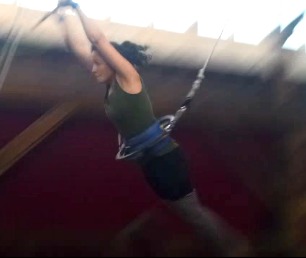 Since the summer of 2012, I’ve been taking regular flying trapeze classes at Emerald City Trapeze. I love it, and am currently close to mastering the cutaway half. In my year and a half as a trapeze student, I’ve picked up little tips and tricks along the way that I wish someone had told me sooner. I’d like to share them here, in case they can help others as they take to the air.
Since the summer of 2012, I’ve been taking regular flying trapeze classes at Emerald City Trapeze. I love it, and am currently close to mastering the cutaway half. In my year and a half as a trapeze student, I’ve picked up little tips and tricks along the way that I wish someone had told me sooner. I’d like to share them here, in case they can help others as they take to the air.
Spatial Awareness
If it’s available to you, I highly recommend taking trampoline classes to complement your trapeze lessons. Trampoline has helped my body awareness an incredible amount. It’s a good way for your body to practice some of the common movements and positions, so they’re familiar when you’re in the air.
Here’s something else that took me far too long to think about and work on: keep your eyes open. For a long time, I didn’t take in much visual information while in the midst of doing tricks. My eyes may not have been actually closed, but I wasn’t using them. When you get to intermediate tricks with more rotation, spotting becomes critical, so I’d advise getting into the habit from the beginning. Learn to take in what you see, even as you’re swinging and upside down. Practice spotting parts of the rig (net, platform, catch trapeze, poles) as you go through your tricks.
Using Grips
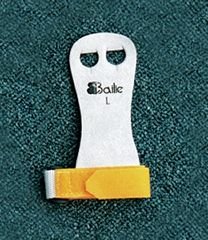 In my experience, most flyers use grips, and they’ve been good for me. Beginners should buy basic gymnastics palm guards, as pictured. Once you become advanced enough, you will transition to dowel grips – something I have yet to do.
In my experience, most flyers use grips, and they’ve been good for me. Beginners should buy basic gymnastics palm guards, as pictured. Once you become advanced enough, you will transition to dowel grips – something I have yet to do.
You should only have the grips fully in place while you’re actually in the air (and just before). The rest of the time, slip them off your fingers and let them flop around your wrists. Otherwise, you risk getting them damp with sweat, which can stretch them out. Also, put chalk under the grips and not on top of them. This may sound obvious, but it wasn’t to me at first.
Finally, if your grips start to look too smooth (and therefore slippery), look around the rig for a wire bristle brush and use it to scuff up the leather a bit.
The Passing of Time
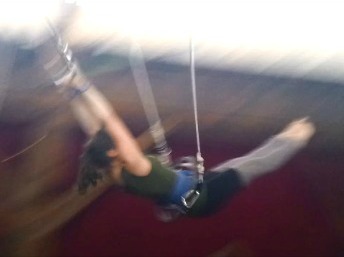 When you first start trapeze, you whiz through tricks. It’s not uncommon to master a new trick every class or two, which definitely contributes to the trapeze addiction. Your progress won’t always be so fast, though. Eventually, you’ll find that one trick that is your own particular challenge (the pullover shoot, in my case, and I’m still bitter about the abrasions). Then, you graduate to working on the swing. After one try, you can tell it’s hard, but what they don’t tell you is that it can take months (at 1-2 classes per week) to get your takeoff and swing good enough to do it out of safety lines. I would’ve found it much less frustrating if I had a realistic idea of the normal timeframe.
When you first start trapeze, you whiz through tricks. It’s not uncommon to master a new trick every class or two, which definitely contributes to the trapeze addiction. Your progress won’t always be so fast, though. Eventually, you’ll find that one trick that is your own particular challenge (the pullover shoot, in my case, and I’m still bitter about the abrasions). Then, you graduate to working on the swing. After one try, you can tell it’s hard, but what they don’t tell you is that it can take months (at 1-2 classes per week) to get your takeoff and swing good enough to do it out of safety lines. I would’ve found it much less frustrating if I had a realistic idea of the normal timeframe.
Another thing to be aware of is that trapeze instructors are an itinerant population. They travel regularly, from shows to schools and back again. Don’t assume that your favorite coach will always be there, and don’t be disappointed when he or she moves on. Expect a rotating cast of teachers, which can be positive because each person gives slightly different advice, and when you’re stuck on a trick, hearing a new perspective can be just what you need.
Odds and Ends
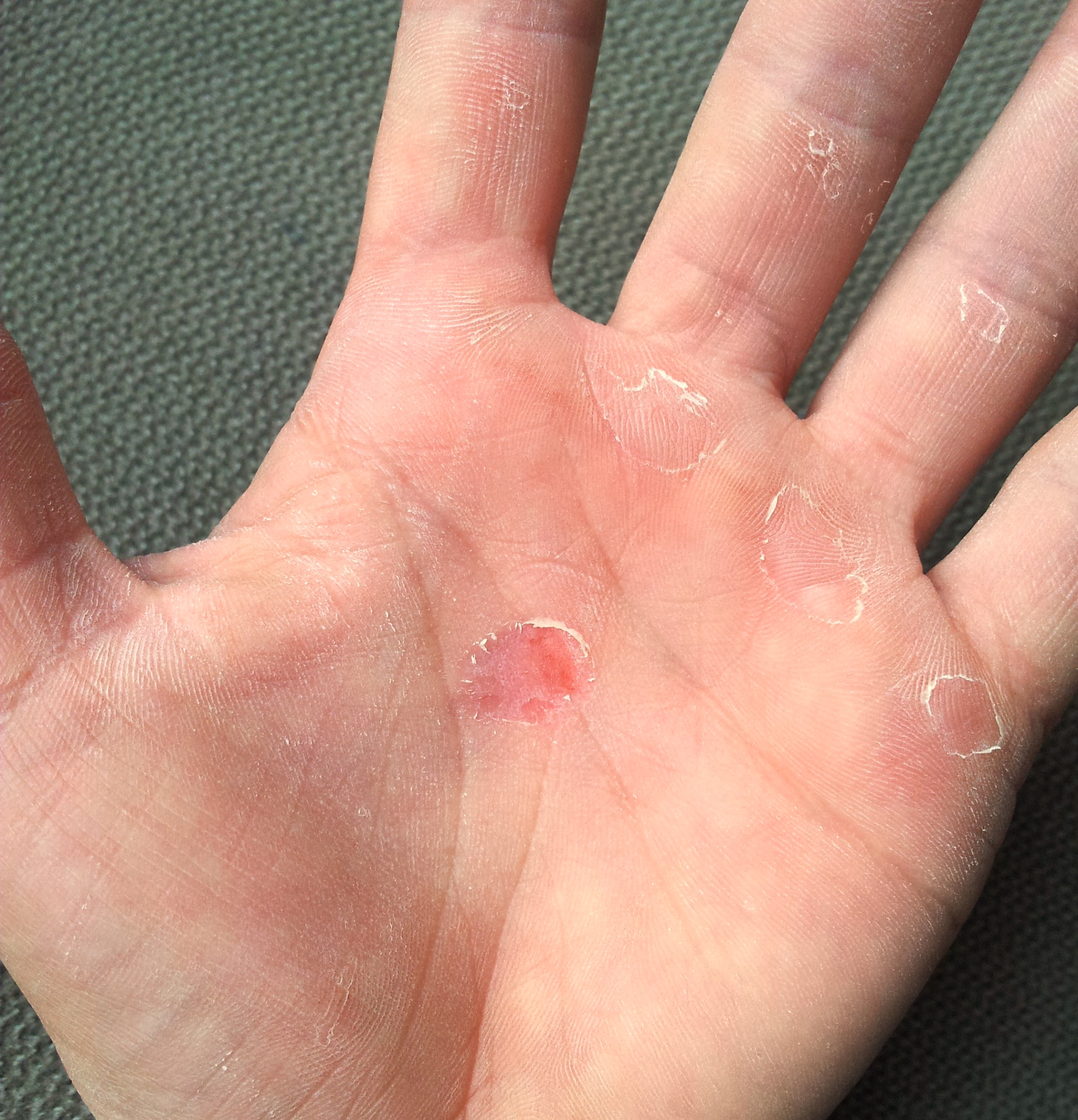 Do you often get a big rip in your left palm? If so, you are probably overgripping. Wearing grips won’t protect you from this – you need to change how you hold the bar. It should be positioned at the base of your fingers, not in the middle of your palm. When you overgrip, your hand goes too far over and around the bar. Think about doing it right at the moment of take off, and your rips should become less frequent.
Do you often get a big rip in your left palm? If so, you are probably overgripping. Wearing grips won’t protect you from this – you need to change how you hold the bar. It should be positioned at the base of your fingers, not in the middle of your palm. When you overgrip, your hand goes too far over and around the bar. Think about doing it right at the moment of take off, and your rips should become less frequent.
In my trapeze bag, I keep a sweater, leg warmers, and fuzzy slippers. You may want to do the same.�Most of the year, it’s cold when I’m sitting around waiting, and I put all that stuff on between turns.
When I was working on my swing, for a long time I was stuck on the takeoff. �The thing that finally helped was doing some weightlifting to strengthen my right shoulder (the one that lifts the bar). Without that strength, the takeoff was always a struggle. You may want to try it – all I did was lifted a full Nalgene bottle, a couple sets�a day for a week.
I certainly don’t know everything about trapeze, and I’m looking forward to learning more tips and tricks as I continue along the way.
Filed under: circus, learning
| « Life Lessons from an Argument | My Recumbent Bike Gear » |
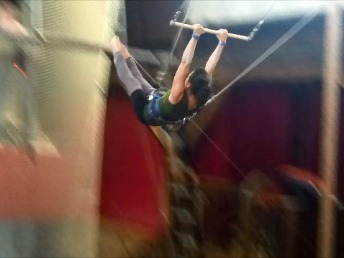
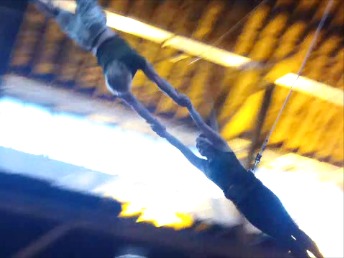










March 7th, 2017 at 11:03 am
Hey thanks kate. Im new to trapeze and havinh problems swinging myself up onto the bar. Any tips (had one session. 2nd tomorrow)
March 7th, 2017 at 11:18 am
Hi Kirsten! It can take time to develop the strength to do this if you’re just getting started. Keep at it, and work on conditioning as well. Here’s a resource I recommend: https://www.getcircusstrong.com/blog/